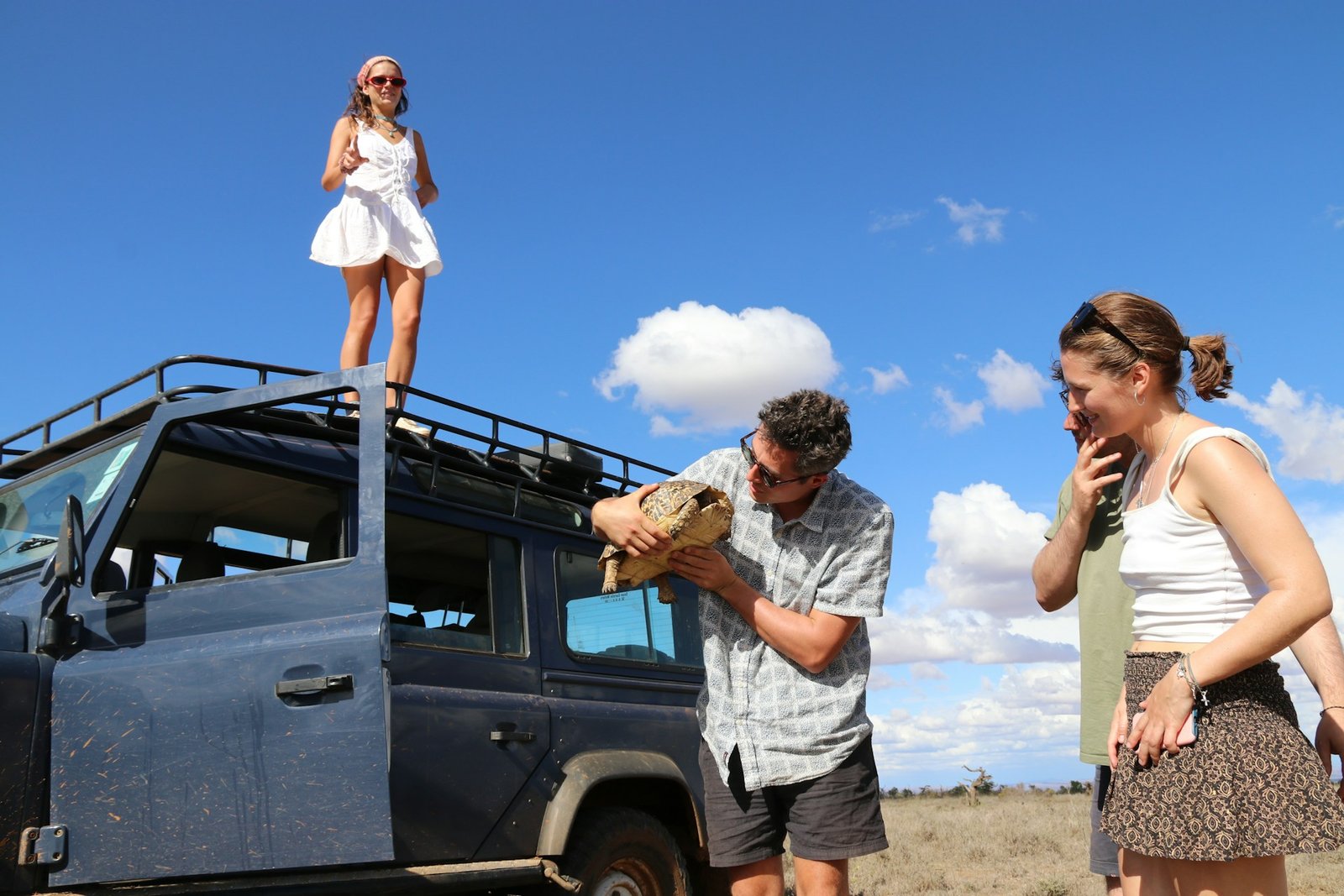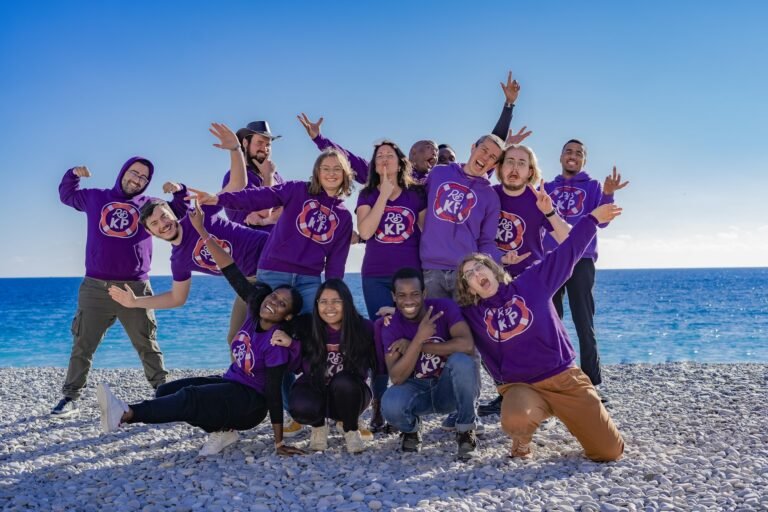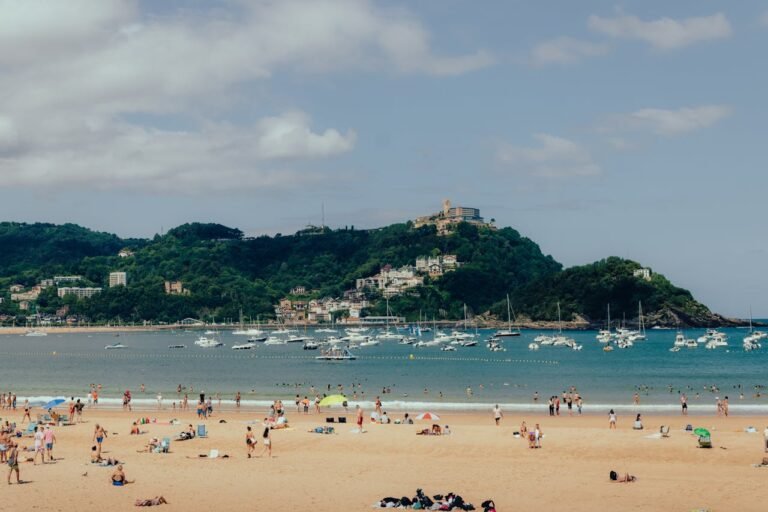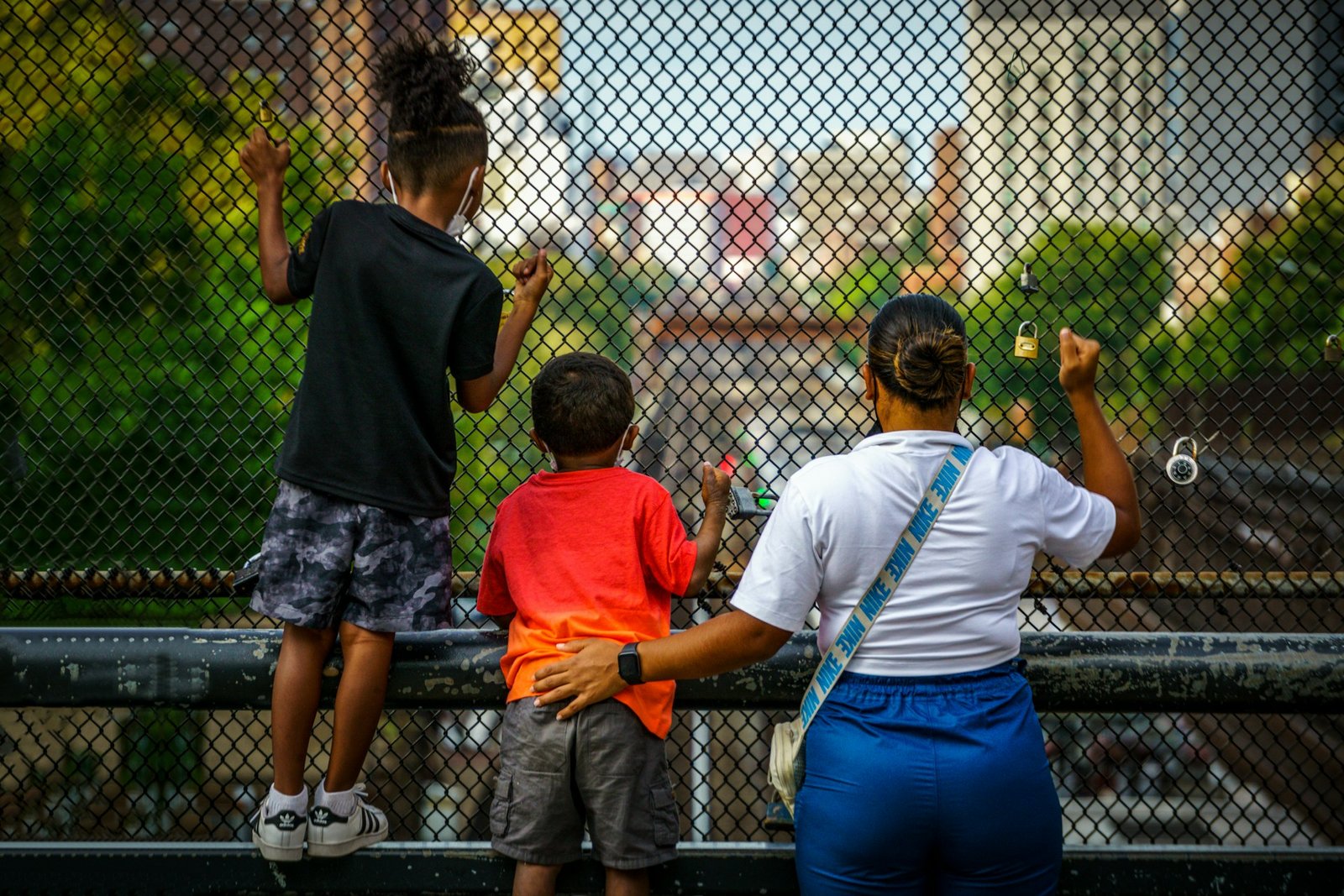
Let me tell you about the moment everything clicked for me about Kenya. I was sitting in the back of a Land Cruiser, watching my 12-year-old nephew Jake stare slack-jawed at a giraffe casually munching leaves three feet from our window, while my sister frantically tried to get the perfect selfie angle. Meanwhile, my dad was arguing with the guide about whether that distant speck was a cheetah or a very ambitious house cat.
That’s when it hit me: Kenya isn’t just about the Big Five or Instagram-worthy sunsets. It’s about those raw, unfiltered moments when your carefully planned family dynamics dissolve into pure wonder. And let me be honest—organizing a group trip to Kenya can feel like herding cats, if those cats had strong opinions about budget hotels and an irrational fear of malaria.
But after three family trips to Kenya (and only one minor meltdown over missing luggage), I’ve cracked the code on making everyone happy. Whether you’re wrangling teenagers, accommodating grandparents, or managing that one relative who “doesn’t do bugs,” here’s how to pull off a Kenya adventure that’ll have everyone talking for years.
Understanding What Makes Kenya Perfect for Groups
Kenya hits that sweet spot between accessible adventure and authentic Africa. Unlike some destinations where you need a PhD in logistics, Kenya’s tourism infrastructure actually works. The roads between major parks won’t rearrange your internal organs, most lodges have Wi-Fi (spotty, but it exists), and you can find everything from luxury safari camps to family-friendly beach resorts.
The real magic happens in the diversity. Your wildlife-obsessed uncle can geek out over migration patterns in the Maasai Mara while your beach-loving sister soaks up rays in Diani. The history buffs get their fix in Lamu’s ancient streets, and the adrenaline junkies can tackle Mount Kenya. It’s like a choose-your-own-adventure book, but with better food.
Timing Your Trip: When Everyone Can Actually Agree
Here’s the thing about timing in Kenya—there’s no universally “bad” time to visit, which is both a blessing and a curse when you’re trying to coordinate schedules across multiple families. The dry seasons (July-October and January-March) offer the classic safari experience with predictable weather and easier game viewing. But they also come with higher prices and crowds that can make the Mara look like a safari traffic jam.
I’ve learned to love the shoulder seasons (April-June and November-December). Yes, you might catch some rain, but the landscapes are impossibly green, the crowds thin out, and you’ll save enough money to upgrade someone’s tent (always a good peace-keeping strategy). Plus, watching a thunderstorm roll across the savanna while you’re safe in your lodge? Pure drama.
For families with school-age kids, July and August are unavoidable despite the crowds. Book everything six months ahead, embrace the circus, and remember that sharing a wildebeest crossing with 50 other vehicles is still pretty spectacular.
Choosing Your Base: Safari Camps vs. Hotels vs. Rental Houses
The accommodation decision can make or break group harmony. I’ve seen families implode over thread counts and bathroom-sharing protocols. Here’s my strategy: diversify your portfolio.
Safari Lodges and Camps Perfect for 3-4 nights when you want someone else to handle logistics. Most offer family tents or connecting rooms, and the all-inclusive aspect eliminates the “who’s paying for drinks” awkwardness. Fairmont Safari Club in the Mara and Sarova Salt Lick in Tsavo are solid choices that won’t terrify your budget-conscious relatives.
Nairobi Hotels for Transition Days Don’t underestimate the power of a good hotel night for regrouping. The Emakoko or Villa Rosa Kempinski offer that perfect blend of safari atmosphere and urban comfort. Plus, Nairobi’s restaurants are incredible—book a table at Talisman or Carnivore for your first night to set the tone.
Beach Resorts in Diani or Malindi For the post-safari recovery phase. All-inclusive beach resorts like Leopard Beach Resort or Baobab Beach Resort handle the logistics while everyone decompresses from safari sensory overload.
The Art of Safari Vehicle Politics
Nothing tests family bonds quite like deciding who sits where in a safari vehicle for eight hours. I’ve developed a rotation system that would make the UN proud: window seats rotate every game drive, the person with the longest legs gets shotgun, and whoever complains the most sits in the middle.
For groups larger than six, splurge on two vehicles. Trust me, the extra cost is worth avoiding the inevitable “Uncle Bob’s blocking my camera” drama. Plus, it creates a bit of healthy competition—nothing motivates wildlife spotting like trying to one-up the other car’s sightings.
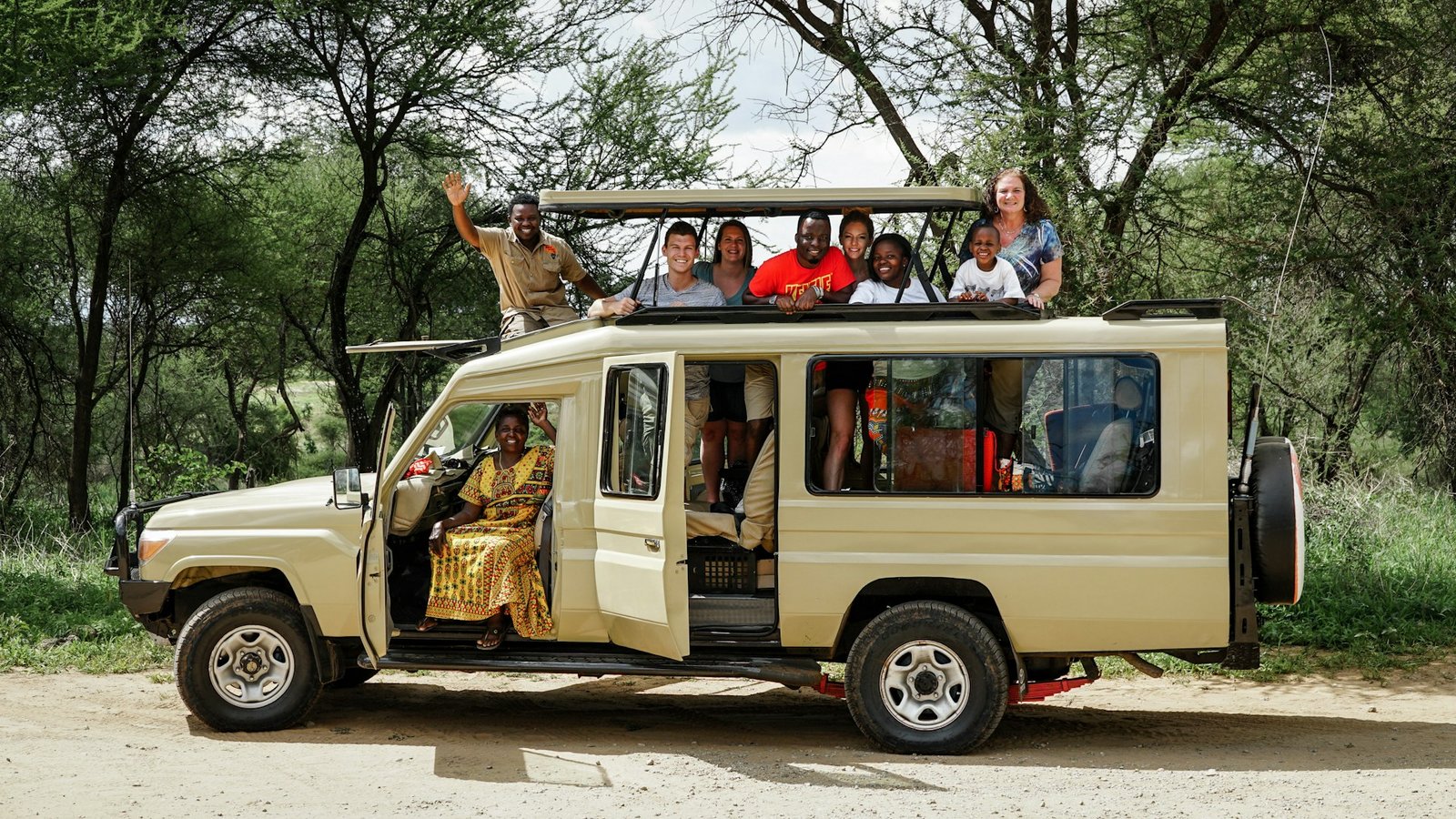
Managing Expectations and Energy Levels
The biggest mistake I see families make is trying to pack too much into too few days. Kenya rewards the slow traveler, but family groups often arrive with military-precision itineraries that would exhaust a Navy SEAL.
My rule: one major activity per day, maximum. Morning game drive? Afternoon is for pool time and naps. Cultural village visit? Evening stays at the lodge. The magic happens in the downtime when kids process what they’ve seen and adults actually talk to each other instead of frantically photographing everything.
Energy Management Strategy:
- Start safari days early (5:30 AM game drives are non-negotiable)
- Build in rest afternoons every other day
- Have backup indoor activities for surprise weather
- Accept that someone will always be tired/hungry/need a bathroom
Cultural Experiences That Work for All Ages
Kenya’s cultural richness goes way beyond tourist village visits, though those have their place. The key is finding authentic experiences that don’t feel like performance theater.
The Giraffe Centre in Nairobi is touristy but genuinely magical—watching a toddler feed a 16-foot giraffe never gets old. The David Sheldrick Elephant Orphanage offers that perfect blend of conservation education and heartstring-tugging baby elephants.
For something deeper, arrange a home visit through your lodge or guide. Sharing tea with a Maasai family in their boma, learning about traditional medicine, or helping prepare ugali creates connections that outlast any photo. Just set expectations: these aren’t performances but genuine cultural exchanges.
Food Adventures (And Disasters)
Kenyan cuisine deserves more credit than it gets. Beyond the tourist-friendly international buffets, you’ll find incredible Indian influences along the coast, hearty stews inland, and some of the best coffee on the planet.
Group-Friendly Food Strategies:
- Start adventurous: try nyama choma (grilled meat) at a local joint
- Always have familiar backup options for picky eaters
- Street food tours in Nairobi are incredible but stick to busy, high-turnover stalls
- Coastal cuisine is naturally group-friendly—seafood platters work for sharing
I’ll never forget watching my vegetarian daughter discover that Kenyan lentil stews could be revelatory while my meat-loving father grudgingly admitted that fresh fish in coconut curry beat his usual burger preferences.
Budgeting Without Breaking Relationships
Money talk gets weird in groups, especially family groups where income levels vary wildly. Have the awkward conversation early and often. Create a shared spreadsheet, decide what gets split versus what stays individual, and build in contingency funds for those “once in a lifetime” opportunities.
Typical Kenya Group Budget Breakdown (per person):
| Expense Category | Budget Range | Group Savings Tips |
| Flights | $800-1,500 | Book together for group discounts |
| Accommodation | $100-400/night | Mix camping and luxury; share rooms |
| Safari Vehicle | $200-300/day | Split between 6-8 people |
| Meals | $30-80/day | All-inclusive lodges; cook some meals |
| Activities | $50-200 each | Group bookings often get discounts |
| Miscellaneous | $500-1,000 | Souvenirs, tips, emergency fund |
The secret is transparency. Nobody likes financial surprises when they’re 8,000 miles from home.
Packing for Success (And Avoiding Baggage Disasters)
Group packing requires military-level coordination. I learned this the hard way when my sister’s luggage decided to vacation in Dubai while we headed to the Mara. Now I swear by the “buddy system”—everyone packs essentials for someone else in their bag.
Non-Negotiable Group Packing List:
- First aid kit with prescription backup medications
- Portable phone chargers and universal adapters
- Shared binoculars (buy good ones; everyone will use them)
- Insect repellent (lots of it)
- Sunscreen (African sun doesn’t mess around)
- Hand sanitizer and wet wipes
- Cash in small bills for tips and markets
Pro tip: assign one person as the “group gear manager” and let them handle communal items like first aid, charging stations, and emergency supplies. Rotate this responsibility daily to share the load.
Capturing Memories Without Losing the Moment
Everyone’s a photographer now, which can turn magical wildlife moments into iPhone-waving chaos. Set some ground rules: designate one “official photographer” per day who handles the group shots, establish phone-free times during game drives, and remember that the best family photos happen when people forget about the camera.
My favorite family Kenya photo isn’t the perfect lion shot or sunset silhouette. It’s a candid moment of my mom laughing at something my dad said while a curious vervet monkey investigates her hat in the background. Real moments trump posed perfection every time.
Health and Safety for Peace of Mind
Kenya is remarkably safe for tourists, but group travel requires extra attention to health logistics. Visit a travel clinic together before departure—having everyone on the same malaria prevention protocol eliminates confusion and ensures nobody forgets their meds.
Group Health Essentials:
- Travel insurance for everyone (non-negotiable)
- Shared first aid knowledge—at least two people should know basic emergency protocols
- Emergency contact list distributed to all participants
- Copy of everyone’s passport and insurance cards
- Designated “medical point person” for each family unit
The biggest health challenge I’ve encountered is managing different comfort levels with risk. Some people want to bubble-wrap themselves; others think malaria is just a myth. Find your group’s middle ground and stick to it.
Transportation That Doesn’t Drive Everyone Crazy
Kenya’s infrastructure varies wildly depending on where you’re going. Domestic flights between major destinations (Nairobi to Mombasa, Maasai Mara to Amboseli) are reliable and save time, but they’re pricey for large groups. Road trips offer flexibility and cost savings but require patience and strong stomachs.
For airport transfers and city transport, use reputable companies like Uber (available in major cities) or arrange transfers through your accommodation. Nothing starts a trip off wrong like getting scammed by a taxi driver at Jomo Kenyatta Airport.
Transportation Decision Matrix:
- Domestic flights: Fast, reliable, expensive
- Private van/bus: Flexible, scenic, time-consuming
- Organized tour transport: Hassle-free, less control, mid-range cost
- Self-drive: Ultimate flexibility, requires confident driving skills
Making Everyone Happy: The Impossible Dream
Here’s the truth: you can’t please everyone all the time, especially in a group larger than four people. Someone will always be too hot, too tired, or too something. The secret is rotating the spotlight—make sure everyone gets their “must-do” experience, even if it’s not everyone else’s cup of tea.
My teenage niece insisted on visiting the Kazuri Bead Factory in Nairobi (not exactly safari excitement), but watching her light up while learning about women’s cooperatives made it worthwhile for everyone. My father’s insistence on visiting every single airfield from his pilot days was less universally appreciated, but we found ways to make it work.
The magic happens when you embrace the chaos instead of fighting it. Kenya has a way of throwing curveballs that turn into the best stories later. The delayed flight that led to an unexpected night in Nairobi. The wrong turn that revealed an incredible viewpoint. The restaurant that was closed, forcing you to try that hole-in-the-wall place that served the best meal of the trip.
Weather, Seasons, and Backup Plans
Kenya straddles the equator, which means predictably unpredictable weather. I’ve experienced four seasons in a single day in the Kenyan highlands, watched flash floods turn roads into rivers, and sweated through supposedly “cool” dry seasons.
Weather Reality Check:
- Dry seasons aren’t always dry
- Rainy seasons don’t rain constantly
- Cool means 70°F, not Minnesota winter
- Hot can reach surface-of-the-sun levels
- Altitude matters more than season in places like Nairobi
Always have Plan B activities. Indoor cultural centers, shopping in covered markets, hotel pools, or extended lunches become lifesavers when weather doesn’t cooperate. The National Museums of Kenya in Nairobi are actually fascinating and can easily fill a rainy afternoon.
The Real Kenya: Beyond the Tourist Trail
The most memorable family moments often happen away from the traditional safari circuit. Visiting a local school where your kids can interact with Kenyan students. Shopping at City Market in Nairobi where the hustle and bustle creates its own entertainment. Taking a matatu (shared taxi) ride that terrifies and delights in equal measure.
These experiences require more planning and cultural sensitivity, but they’re worth the effort. Work with local guides who understand group dynamics and can facilitate authentic interactions without exploitation. Organizations like Hands Across Cultures or local community tourism initiatives can help arrange meaningful cultural exchanges.
Crisis Management and Murphy’s Law
Something will go wrong. I guarantee it. Someone will get sick, luggage will disappear, flights will be delayed, or the hotel will “lose” your reservation. The key is rolling with it instead of letting it derail everything.
Crisis Prevention Kit:
- Extra credit cards and cash stashed separately
- Digital copies of all important documents
- Emergency contact list for local services
- Flexible booking policies where possible
- Travel insurance that covers group travel complications
- Sense of humor (non-optional)
My family still laughs about the night we ended up sleeping in the Nairobi airport because of a missed connection. What could have been a disaster became an adventure story we’ve told for years.
Technology and Connectivity
WiFi in Kenya ranges from surprisingly good to “is this thing even plugged in?” Don’t count on staying connected everywhere, which is both frustrating and liberating. Use offline maps, download entertainment content before you travel, and embrace the digital detox opportunities.
Tech Strategy for Groups:
- Portable WiFi hotspots for critical connectivity
- WhatsApp groups for easy communication (works with limited data)
- Offline translation apps for basic Swahili
- Shared photo albums that sync when connection allows
- Emergency communication apps that work with satellite
Souvenir Shopping Without Breaking the Bank
Kenyan markets are sensory overload in the best possible way, but they can quickly become budget black holes. Set souvenir budgets for each family member, especially kids who want to buy everything they see.
The Maasai Market in Nairobi (rotates locations throughout the week) offers incredible handicrafts, textiles, and artwork. Teach kids to negotiate respectfully—it’s part of the cultural experience, but don’t be ridiculous about prices. These artisans are making a living, not running a charity.
Best Kenyan Souvenirs:
- Handcarved soapstone sculptures
- Traditional Maasai jewelry and beadwork
- Kenyan coffee (buy directly from farms when possible)
- Kikoy textiles and kangas
- Local spices and tea blends
- Handwoven baskets
The Perfect Kenya Itinerary Template
Every family is different, but here’s a framework that works for most groups:
Days 1-2: Nairobi Acclimatization
- Airport transfer and hotel check-in
- Giraffe Centre and Elephant Orphanage visits
- Cultural dinner and early rest
Days 3-5: Safari Experience
- Maasai Mara or Amboseli National Park
- Game drives, cultural visits, and lodge relaxation
- Plenty of processing time for wildlife experiences
Days 6-8: Coast or Cultural Extension
- Diani Beach for relaxation or Lamu for history
- Water sports, cultural tours, or pure beach time
- Gradual re-entry to civilization
Day 9: Departure
- Last-minute shopping and goodbyes
- Airport transfer with buffer time for delays
Adjust based on your group’s interests, energy levels, and budget. The key is building in flexibility and recovery time.
Final Thoughts: Embracing the Beautiful Chaos
Kenya will change your family. Not in some cheesy tourism-brochure way, but genuinely. You’ll discover that your quiet cousin is actually hilarious when confronted with a baboon stealing her sandwich. Your teenage nephew will put down his phone to stare at a sunset over the Rift Valley. Your parents will remember why they fell in love with adventure in the first place.
The logistics are complicated, the personalities are challenging, and something will definitely go wrong. But that’s exactly what makes it worth doing. Years later, nobody remembers the perfect moments—they remember the chaotic ones that became legendary family stories.
Kenya doesn’t just offer wildlife and landscapes; it offers perspective. Standing together watching elephants cross the Mara River or sharing stories around a campfire under stars clearer than you’ve ever seen creates bonds that survive long after you’re back to your normal routines.
So yes, planning a family trip to Kenya is complicated. Yes, someone will complain about something. And yes, you’ll question your sanity more than once. But you’ll also create memories that become family mythology, stories that get better with each telling, and connections that remind you why you chose to travel together in the first place.
The secret isn’t avoiding the chaos—it’s embracing it. Kenya rewards the flexible, delights the curious, and forgives the unprepared. Most importantly, it creates space for families to rediscover each other away from the daily grind of normal life.
Pack your patience along with your safari clothes. You’re going to need both.
Frequently Asked Questions
Q: What’s the best time of year for a family safari in Kenya? A: July through October offers the best wildlife viewing and weather, but expect crowds and higher prices. January through March provides excellent conditions with fewer tourists. Avoid April-May (heavy rains) unless you’re budget-conscious and don’t mind muddy roads.
Q: How much should we budget for a family Kenya vacation? A: Budget $2,500-4,000 per person for a 7-10 day trip including flights, accommodation, and activities. Costs vary dramatically based on luxury level and group size. Camping safaris can cut costs significantly, while luxury lodges can double them.
Q: Is Kenya safe for families with children? A: Yes, Kenya is very safe for tourists who take reasonable precautions. Stick to established tourist areas, use reputable tour operators, and follow health guidelines for malaria prevention and food safety. Crime against tourists is rare but always travel in groups and avoid displaying expensive items.
Q: What vaccinations do families need for Kenya? A: Yellow fever vaccination is required if arriving from endemic areas. Recommended vaccines include hepatitis A/B, typhoid, and meningitis. Malaria prophylaxis is essential for most areas. Consult a travel clinic 6-8 weeks before departure for personalized advice.
Q: Can we do a self-drive safari with kids in Kenya? A: While possible, self-driving isn’t recommended for first-time visitors, especially with children. Roads can be challenging, navigation is difficult, and breaking down in remote areas poses risks. Guided safaris offer better wildlife spotting and peace of mind.
Q: What should families pack for a Kenya safari? A: Pack light, neutral-colored clothing, sun protection, insect repellent, binoculars, camera equipment, and any prescription medications. Many lodges provide laundry services. Don’t forget universal power adapters and portable phone chargers.
Q: How do we choose between different Kenya national parks? A: Maasai Mara offers the best overall safari experience with diverse wildlife and cultural opportunities. Amboseli provides stunning elephant encounters with Mount Kilimanjaro views. Tsavo is less crowded but requires more time. Consider your group’s interests and time constraints.
Q: What’s the best way to handle different budget preferences in our group? A: Have honest budget discussions before booking anything. Consider mixing accommodation types (some nights camping, some in lodges), splitting shared costs equally, and keeping individual expenses separate. Transparency prevents conflicts later.
Q: Should we book everything in advance or leave room for flexibility? A: Book flights and accommodation in advance, especially during peak season (July-October). Leave some activities flexible for weather or group energy levels. Have backup indoor activities planned for unexpected situations.
Q: How do we ensure authentic cultural experiences without exploitation? A: Work with reputable local guides and community-based tourism initiatives. Avoid overly commercialized “cultural villages” and seek genuine interactions through schools, cooperatives, or family visits. Always ask permission before photographing people and respect local customs.
Top Products and Travel Recommendations
Safari Lodges and Camps:
- Fairmont Mara Safari Club – fairmont.com – Luxury tented camp in Maasai Mara with family-friendly amenities and excellent game viewing location.
- Sarova Salt Lick Safari Lodge – sarovahotels.com – Unique elevated design overlooking watering holes in Tsavo, perfect for wildlife photography.
- Amboseli Serena Safari Lodge – serenahotels.com – Stunning Mount Kilimanjaro views with spacious family rooms and cultural programs.
- Governors’ Camp – governorscamp.com – Historic safari camp with excellent guides and authentic bush experience.
Beach Resorts:
- Leopard Beach Resort & Spa – leopardbeach.com – All-inclusive beachfront resort in Diani with family pools and water sports.
- Baobab Beach Resort – baobabbeach.com – Expansive beach resort with multiple pools, restaurants, and kids’ activities.
City Hotels:
- Villa Rosa Kempinski Nairobi – kempinski.com – Luxury city hotel with excellent restaurants and central location for cultural attractions.
- Emakoko Lodge – emakoko.com – Boutique lodge on Nairobi’s edge overlooking Nairobi National Park.
Transportation and Tours:
- Safarilink Aviation – flysafarilink.com – Reliable domestic flights between major safari destinations with scenic routing.
- Pollman’s Tours & Safaris – pollmans.com – Established operator offering customized family safari packages with experienced guides.
Cultural Attractions:
- David Sheldrick Wildlife Trust – sheldrickwildlifetrust.org – Elephant orphanage offering intimate encounters with rescued baby elephants.
- Giraffe Centre – giraffecenter.org – Conservation center where families can feed and interact with endangered Rothschild giraffes.
- Bomas of Kenya – bomasofkenya.co.ke – Cultural center showcasing traditional dances, music, and homesteads from various Kenyan tribes.
Booking Platforms:
- SafariBookings – safaribookings.com – Comprehensive platform for comparing safari operators and reading verified reviews.
- Viator – viator.com – Activity booking platform for cultural tours, day trips, and unique experiences.
Travel Essentials:
- Travel Clinic Finder – cdc.gov/travel – Official CDC resource for finding travel health clinics and vaccination requirements.
- World Nomads Travel Insurance – worldnomads.com – Comprehensive travel insurance covering adventure activities and group travel.
- Lonely Planet Kenya Guide – lonelyplanet.com – Detailed guidebook with family-friendly recommendations and cultural insights.
Wildlife and Conservation:
- Kenya Wildlife Service – kws.go.ke – Official source for park information, entrance fees, and conservation programs.
- Maasai Mara National Reserve – maasaimara.com – Official reserve website with seasonal information and booking guidelines.

